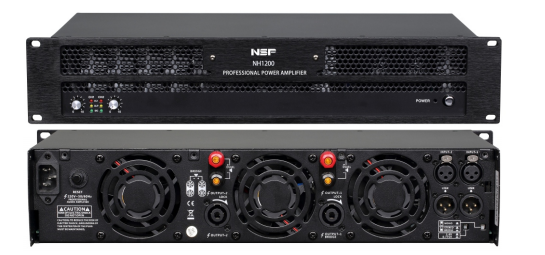When to Consider a Class D Amplifier for High Efficiency?
A Class D Amplifier is an excellent choice for those seeking high efficiency and power savings without compromising audio quality. Whether you are designing a home audio system, setting up professional sound reinforcement, or upgrading your car audio, knowing when to consider a Class D Amplifier can make a significant difference in performance. This article will explore various applications and benefits of Class D Amplifiers to help you determine if they are the right choice for you.

Why Choose a Class D Amplifier?
Understanding the Efficiency of Class D Amplifiers
A Class D Amplifier operates using a switching mode that drastically reduces energy loss, making it far more efficient than traditional Class A or Class AB amplifiers.
Key Benefits of a Class D Amplifier
- High Power Efficiency: Uses less electricity and produces less heat.
- Compact Design: Smaller and lighter than traditional amplifiers.
- Minimal Heat Dissipation: Runs cooler, reducing the need for large heat sinks.
- Improved Battery Life: Ideal for portable and battery-powered systems.
Applications of a Class D Amplifier
Home Audio Systems
Enhanced Sound for Home Theaters
A Class D Amplifier is perfect for home theater systems, delivering clear and powerful audio while maintaining energy efficiency.
Space-Saving Design
Due to their compact nature, Class D Amplifiers can be integrated into modern entertainment systems without taking up excessive space.
Professional Audio and PA Systems
Reliable Performance for Live Events
For concerts and public address systems, a Class D Amplifier ensures powerful sound without excessive heat buildup.
Lightweight for Portability
Many professional sound engineers prefer Class D Amplifiers because they are easier to transport and set up for live events.
Car Audio Systems
Energy Efficiency for Automotive Use
A Class D Amplifier is ideal for car audio setups, ensuring high-quality sound without draining the vehicle’s battery.
Compact and Easy to Install
Its small size allows easy integration into car audio systems, providing great sound with minimal space requirements.
Comparing Class D Amplifiers to Other Types
Class D vs. Class A and Class AB Amplifiers
Efficiency and Heat Management
A Class D Amplifier operates with over 90% efficiency, while Class A and AB amplifiers waste more energy as heat.
Sound Quality Differences
While older Class D Amplifiers had some distortion issues, modern designs have significantly improved, offering high-fidelity sound comparable to Class AB amplifiers.
Class D vs. Class H Amplifiers
Power Efficiency
A Class D Amplifier is more efficient than a Class H amplifier, making it a better choice for applications where energy conservation is critical.
Use Cases
While Class H amplifiers are preferred for high-power applications, Class D Amplifiers excel in efficiency and compact design.
Choosing the Right Class D Amplifier
Factors to Consider
Power Output and Impedance
Ensure the Class D Amplifier you choose matches your speaker’s impedance and power handling capacity.
Total Harmonic Distortion (THD)
Look for amplifiers with low THD for cleaner and more accurate sound reproduction.
Connectivity Options
Choose a Class D Amplifier with the necessary input and output connections to suit your setup.
Installation and Maintenance Tips
Proper Setup of Your Class D Amplifier
- Position the Class D Amplifier in a well-ventilated area.
- Use high-quality cables to minimize interference and signal loss.
- Match the amplifier’s power output with the speakers for optimal performance.
Maintaining Your Class D Amplifier
- Regularly check for dust buildup to prevent overheating.
- Ensure secure connections to avoid signal drops or noise.
- Avoid overloading the amplifier to extend its lifespan.
A Class D Amplifier is a top choice for those who value efficiency, compactness, and superior performance. Whether you’re setting up a home audio system, running a live event, or upgrading your car’s sound system, investing in a Class D Amplifier can provide outstanding results. By understanding the advantages and various applications, you can determine when a Class D Amplifier is the best option for your needs.